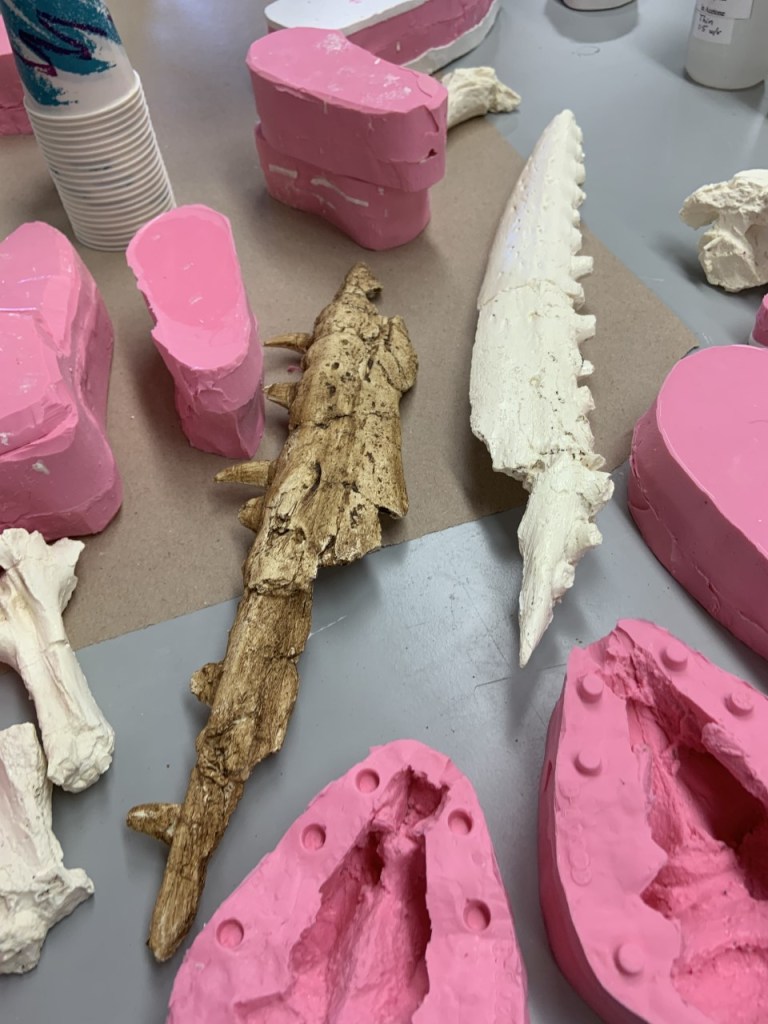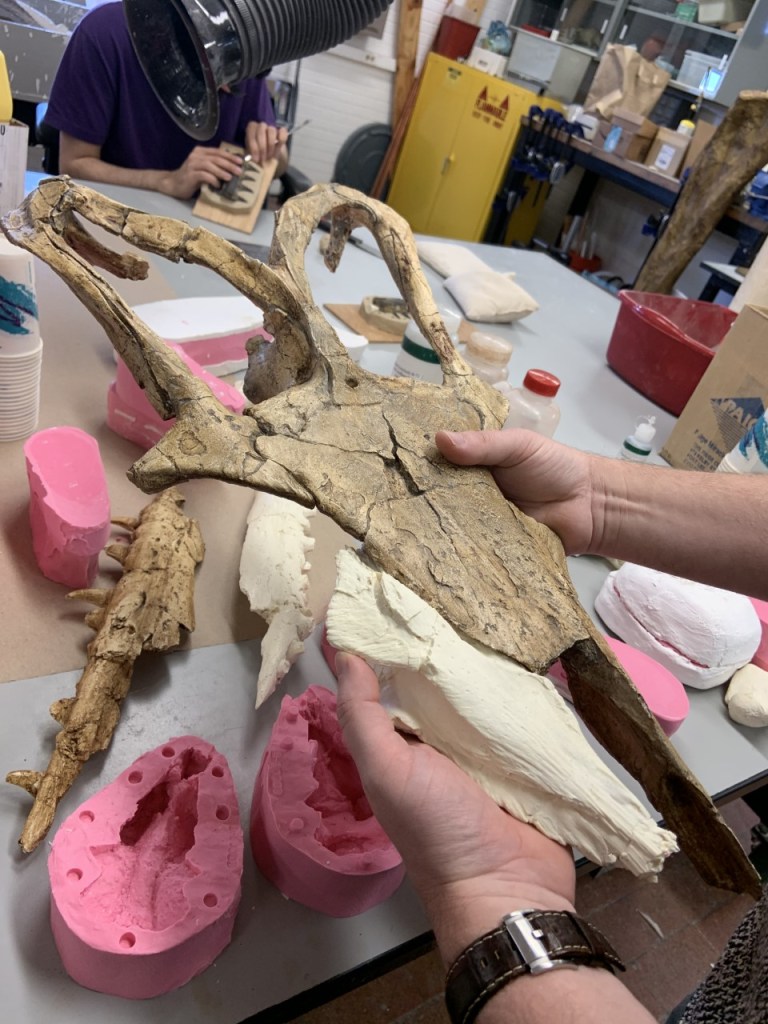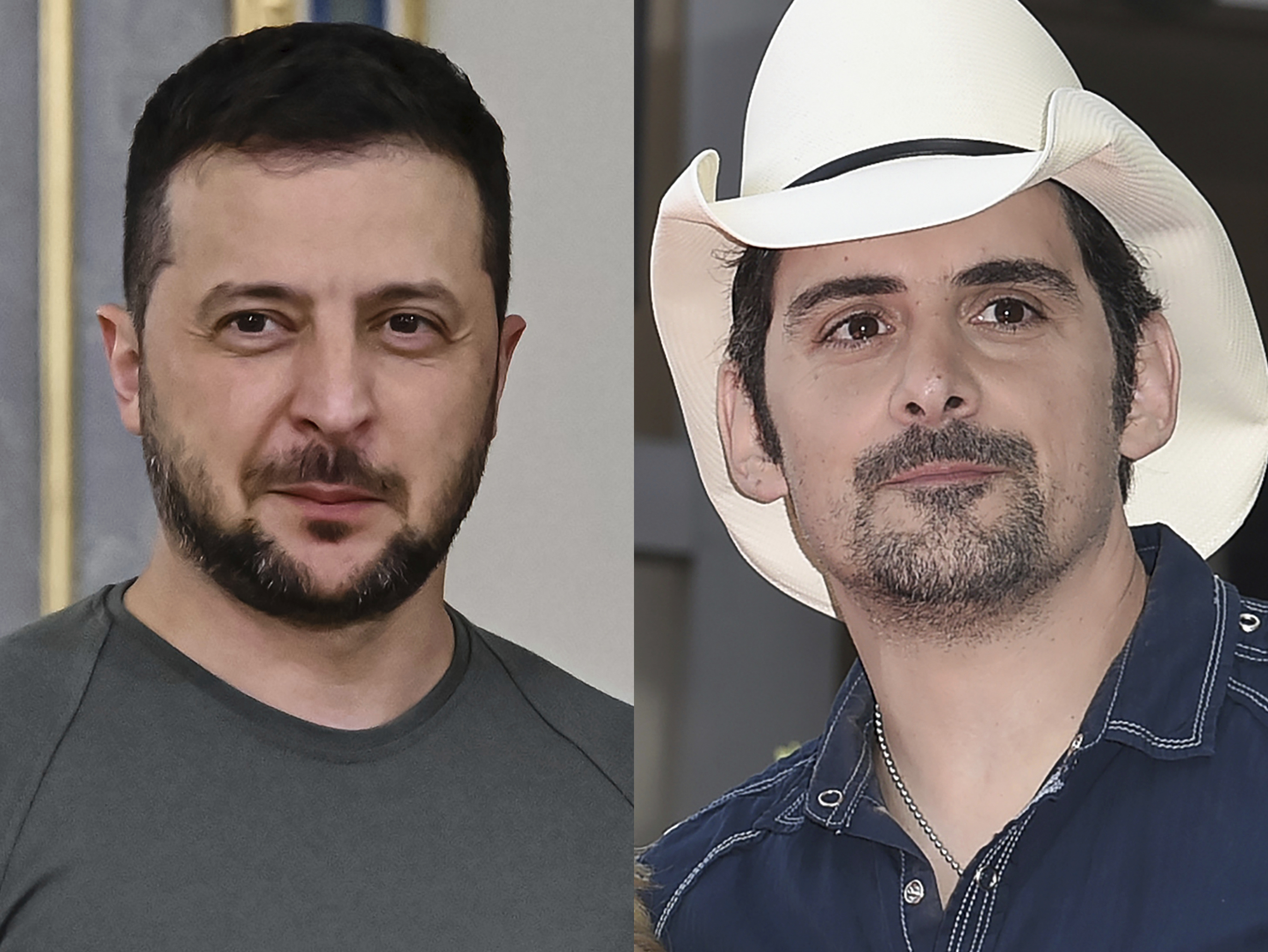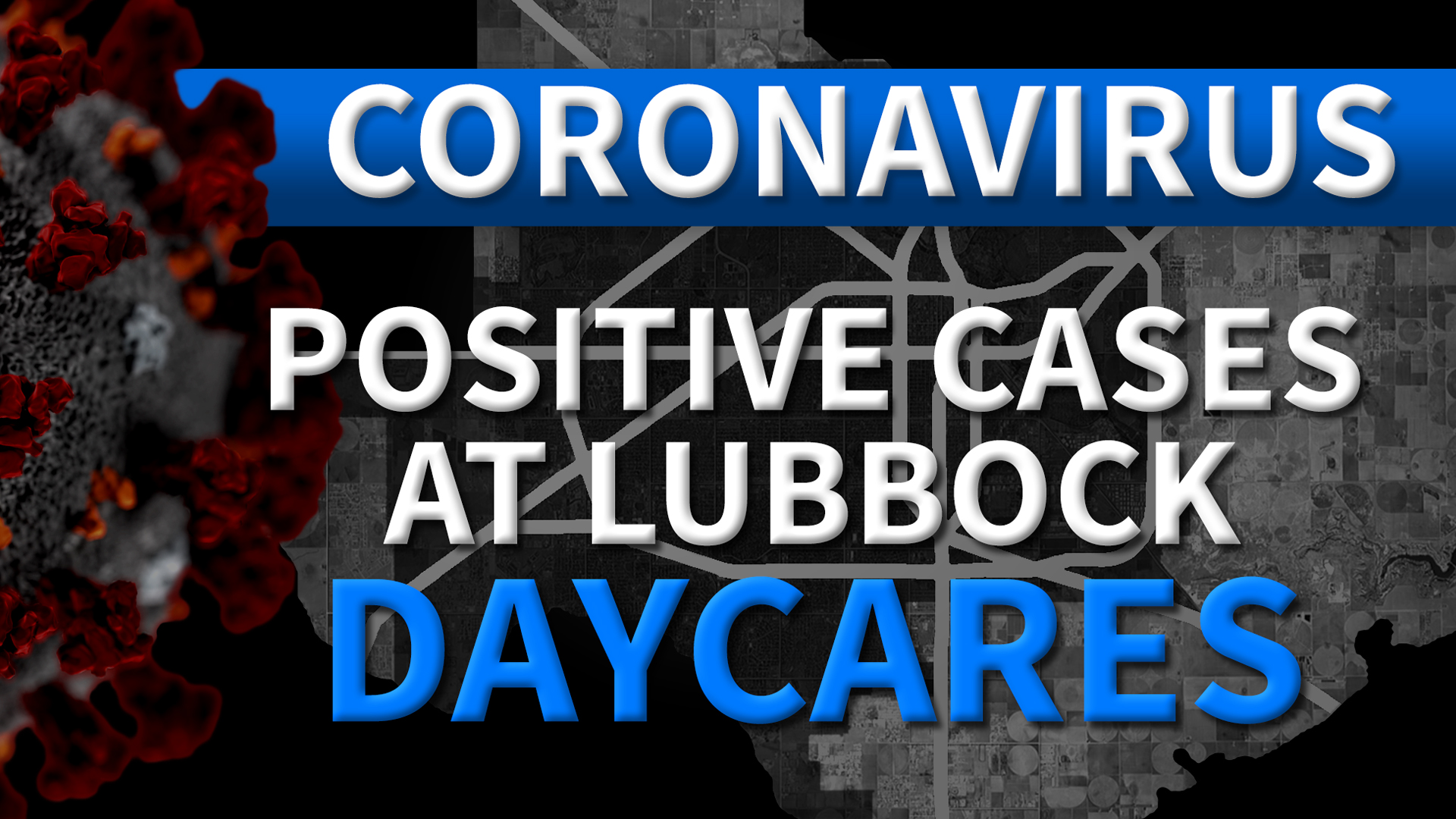AUSTIN (KXAN) — Right now, as you’re reading this, you could be standing on top of a dinosaur.
Did you know that Austin and its surrounding areas are a trove of hidden fossils just waiting to be found?
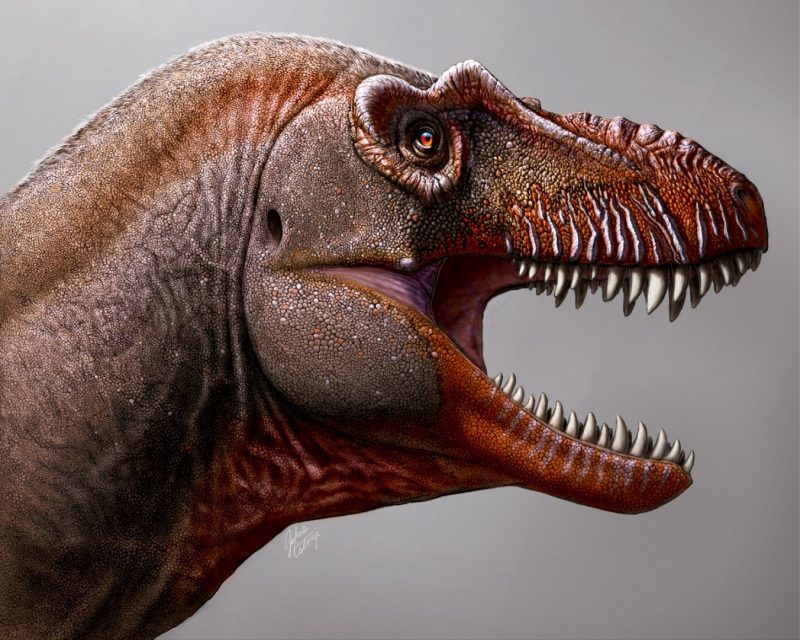
Earlier this month a new tyrannosaur — a relative of the T. Rex — was discovered in Canada. Named “Thanatotheristes,” or “Reaper of Death,” the discovery was the country’s first new species type to be found in 50 years.
While the 26-foot-long dinosaur tops the T. Rex in age (“Reaper of Death” is about 79.5-million-years-old), the T.Rex still overshadows its smaller cousin, with the T.Rex weighing in at nine tons and 40-feet-long.
The new discovery sparked a question: What dinosaurs and other prehistoric creatures have been found in Texas?
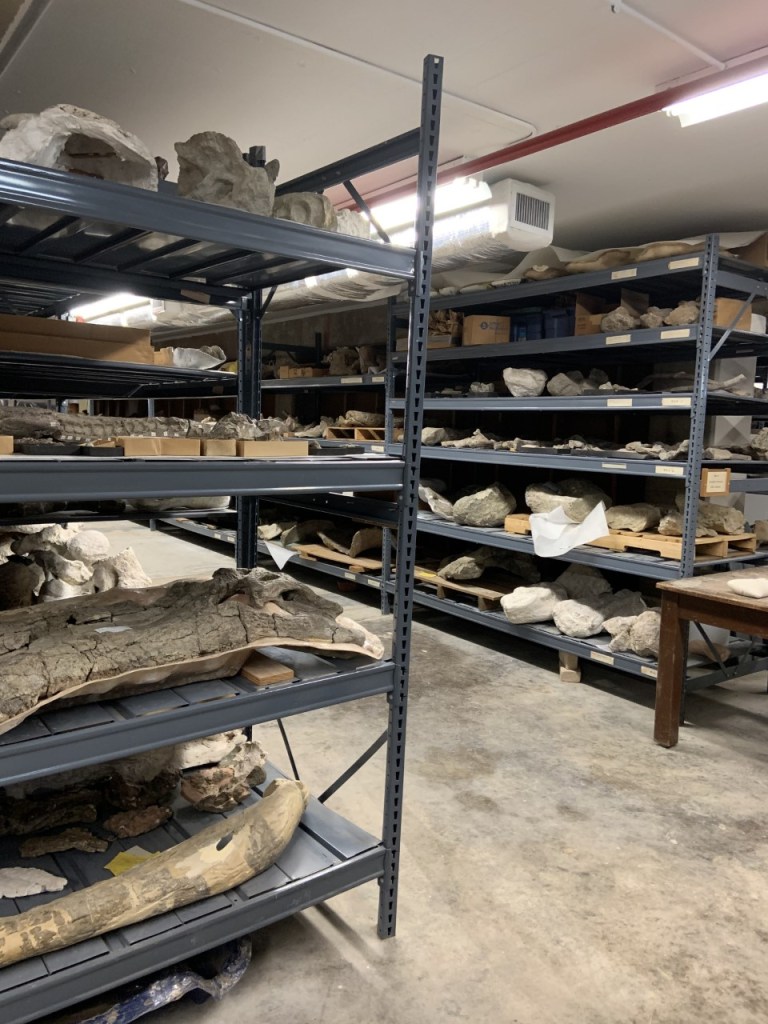
A trip to the Texas Vertabrate Paleontology Collections at the University of Texas’ J.J. Pickle Research Campus in north Austin helped dust off some of our questions.
The facility, which has housed over a million and a half fossils in its time, is a trove of fossils from all over America, but also from here in Texas alone. There, you can even find one section of their fossil collections devoted to pieces found at Big Bend National Park in southwest Texas.
Dinosaurs in the Lone Star State
Alamosaurus
Surprise! It’s actually not named after San Antonio’s iconic landmark —which is really misleading.
According to the City of Austin, Alamosaurus was one of the very last dinosaurs in Texas before the mass extinction period that wiped out many dinosaur species forever.
It didn’t exactly look like this either.

The Alamosaurus was a member of the sauropod dinosaur family, which were the largest dinosaurs, in addition to the largest animals ever to evolve. Sauropods may have weighed around 50 tons — about 10 times more than African elephants, the largest land-living animals alive today.
Aquilarhinus palimentus
As recently as last summer, fossils found in Big Bend National Park 35 years ago were finally classified as a new species of duck-billed dinosaur called “Aquilarhinus palimentus.”
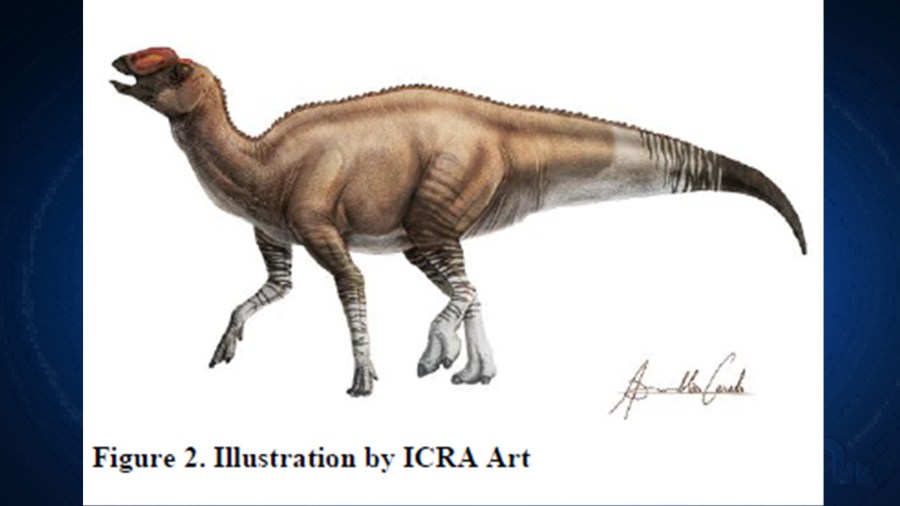
This herbivorous dinosaur had a curved, eagle-like snout (for which it gets its Latin name) and a wide jaw. Officials said that Aquilarhinus probably used its nose to shovel through loose, wet sediment to scoop up aquatic plants from tidal marshes.
A vegetarian that lived by the water? Sure sounds like Austin.
“Aquilarhinus” is now housed at the Texas Vertabrate Paleontology Collections. Above, Director Matthew Brown explains the piece, back in summer 2019.
Unnamed Grocery Store Nodosaur
Back in 2015, four-year-old Wylie Brys was digging with his dad Tim behind a Sprouts grocery store when he found fossils of a previously undiscovered 100-million-year-old dinosaur.

“We commonly go collect fossils as something we can do together to be outside. Wiley enjoys coming with me on my trips,” Tim Brys told Texas Monthly. “We were finding some fish vertebrae in the hillside, and then Wiley walked a little ways ahead of me and came back with a piece of bone. And I paused and was like, ‘OK, where did you find this?’”
Scientists say the armored “pony-sized” member of the Nodosaur family, was likely land-based but may have wandered too far into the area, which was once underwater during the Jurassic period, and sank. A widely recognized relative of the Grocery Store Nodosaur — unclear whether it died attempting to pick up organic produce at Sprouts — is the tank-like Ankylosaurus, pictured below.
The 10-foot Shuvosaurus was also found in Texas and is the earliest known ostrich dinosaur. It had a bird-like beak and no teeth — nightmare fuel.
Close relative of the Velociraptor, Deinonychus is known for its “terrible claw,” its namesake. The creature boasted sickled claws and teeth that were “dagger-like” and “saw-edged.”
But look how happy he looks in this photo!
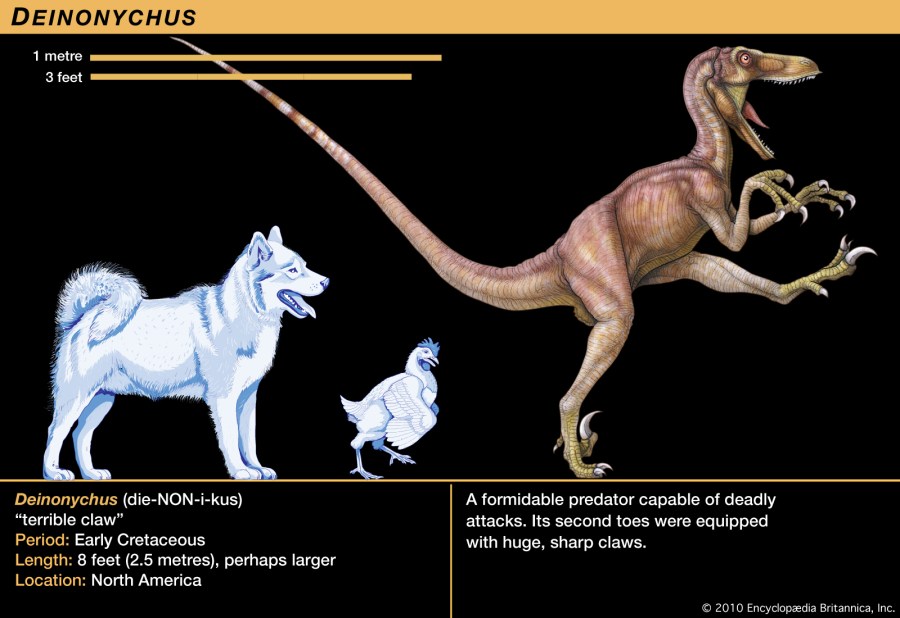
Other former Texas residents
‘Supershark’
Maybe the only thing cooler than a dinosaur?

The fossils from a gargantuan relative of modern-day sharks were discovered by the Dallas Paleontological Society in rocks in Jacksonboro in 2015. The fossils dated back 300 million years.
An estimate of the shark’s size suggest that the Texas supersharks measured between 18 and 26 feet. At its largest, they would have been 25% bigger than modern-day great white sharks.
While this shark was big, it was still small compared to the Megalodon, which remains the largest shark ever — that we know of. Dun dun dun!
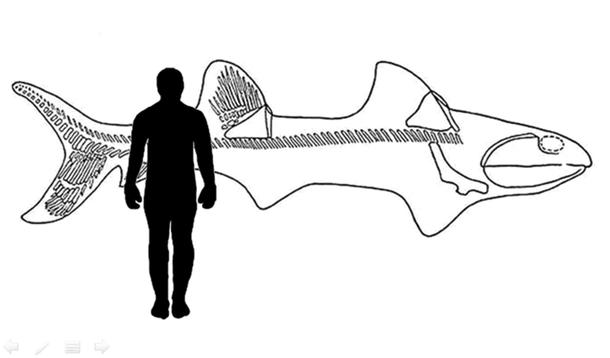
Quetzalcoatlus Northropi, The Texas Pterosaur
Say “Quetzalcoatlus Northropi” five times fast. Actually, just try saying it one time slowly.
The Texas Pterosaur — contrary to popular belief, pterosaurs aren’t dinosaurs — was was first discovered by a University of Texas graduate student at Big Bend National Park in 1971.
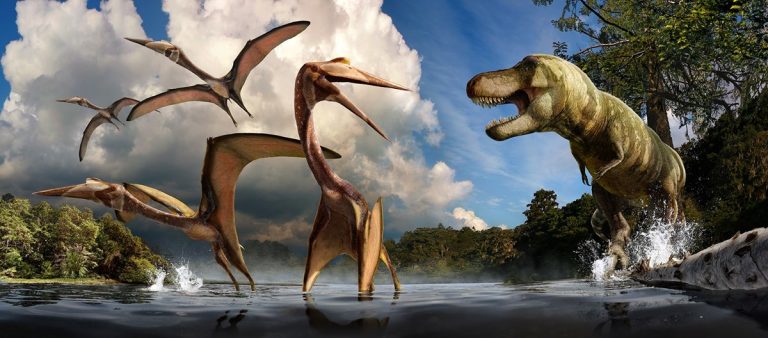
The TP lived in seaside mountains and would snatch fish from the water like pelicans do. It had a wingspan up to 39-feet and is the largest known flying animal to ever live — about the size of an airplane. The flying reptile was so big, researchers originally doubted if it could even fly.
It’s now believed that the TP used its giant wings to walk around and also launch itself into flight, like vampire bats do. See the terrifying example below.
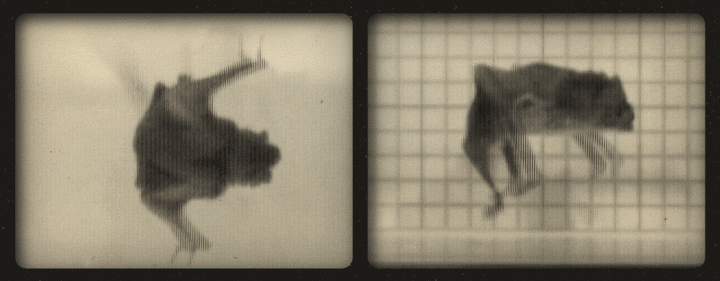
This doesn’t not look like the monster in every disaster movie.
Below are some snaps of Quetzalcoatlus fossils at the Texas Vertabrate Paleontology Collections, including a large wing which hangs in the center’s archives room.
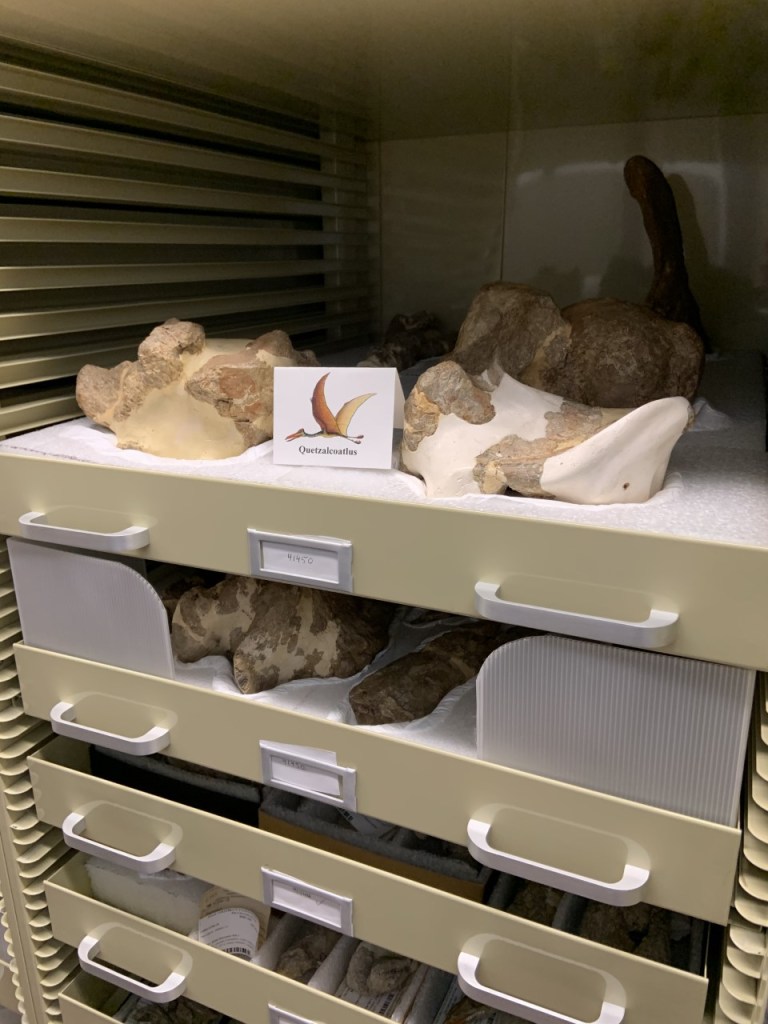
Quetzalcoatlus fossils in a galvanized locker at the Vertebrate Paleontology Department at UT’s J.J. Pickle Research Center (KXAN/Russell Falcon) 
Quetzalcoatlus fossils in a galvanized locker at the Vertebrate Paleontology Department at UT’s J.J. Pickle Research Center (KXAN/Russell Falcon) 
Quetzalcoatlus wing — featuring gap fill-in — at the Vertebrate Paleontology Department at UT’s J.J. Pickle Research Center (KXAN/Russell Falcon)
The Onion Creek Mosasaur
What’s possibly cooler than being a giant shark?
Being an even bigger giant swimming reptile, possibly?
The Onion Creek Mosasaur was discovered in 1935 by UT Austin geology students in Hays County. The Onion Creek measures 30-feet long — and 12 feet of that is tail!

Mosasaurs were apex predators and ate fish and other large marine reptiles. They swam through the ocean with snake-like motions, using its large tail like a propeller.
Coincidentally, when KXAN visited the Texas Vertabrate Paleontology Collections on Feb. 26, one team member was busy picking dirt away from several smaller mosasaur fossils, shown below. Including part of its head!
Why Texas?
While every state has its fair share of history buried in rock, Brown says Texas is a great history-preserver.
“A lot of rock is preserved because of the scale of Texas. And the rock record is so complete, there’s not too many periods missing. We’ve found marine fossils here that nobody was even aware of existing.”
Where to find these fantastic beasts
Texas Memorial Museum
Located at 2400 Trinity Street, the University of Texas at Austin’s Texas Memorial Museum is home to over 5 million specimens, including fossils, gems, minerals and meteorites.
It’s also home to the Onion Creek Mosasaur!
Dinosaur Valley State Park
To see what Texas Parks and Wildlife call “some of the best dinosaur tracks in the world,” Dinosaur Valley State Park in Glen Rose, about an hour’s drive from Dallas. Here, dinosaur footprints have been preserved in the park’s ancient riverbed.
If you find yourself about 45 minutes from Waco, roughly halfway between Austin and Dallas, you can find the Texas Through Time Museum in Hillsboro. The museum says that it strives to showcase as many real specimens as possible.
In our interview with Brown, he said that the Austin area is a “goldmine” for archaeology and paleontology — so get out and start digging!


